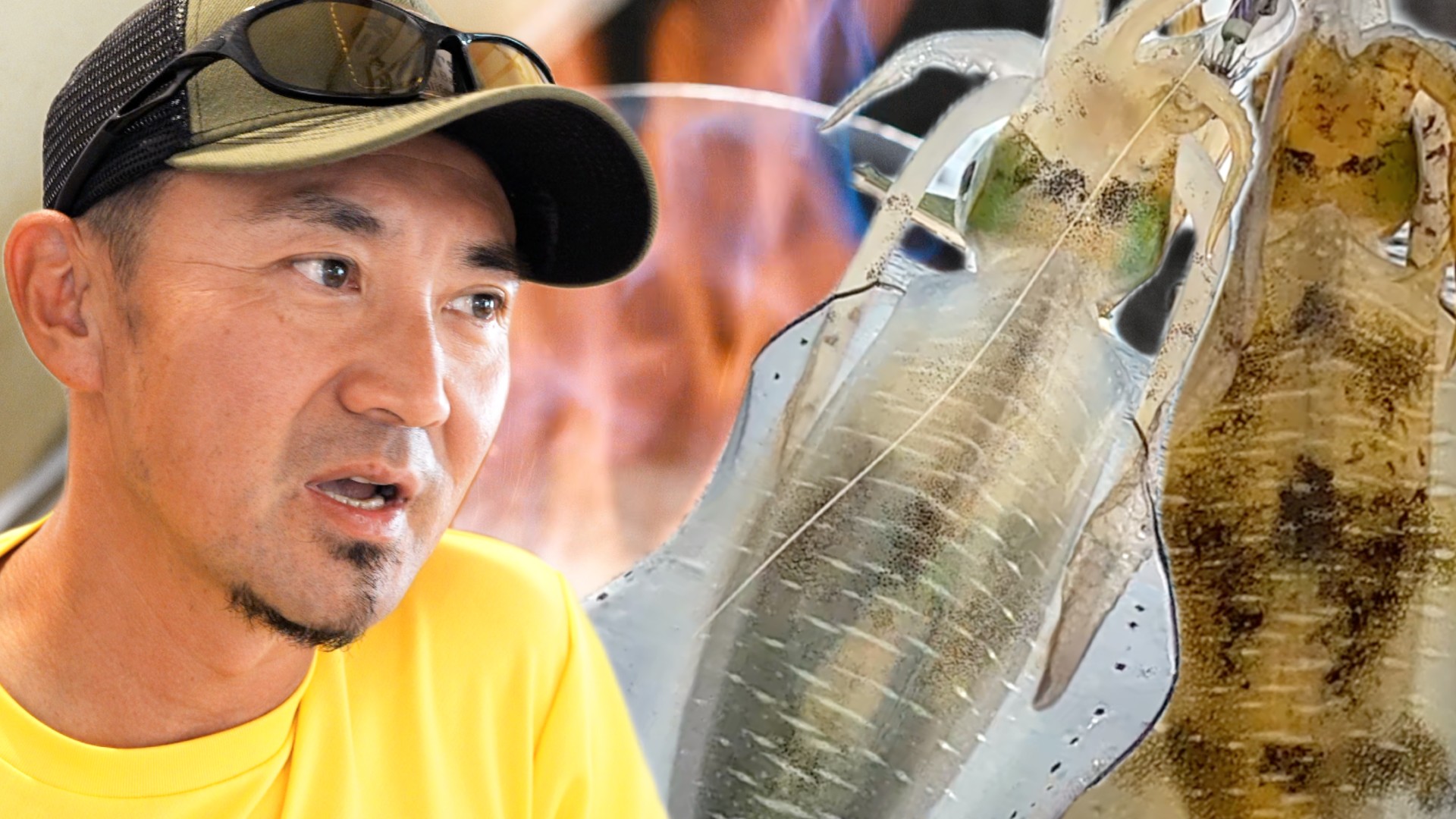A Day on the Water: Catching and Cooking Japan’s Tastiest Squid
The perfect day for a fisherman often starts before dawn. The preparation is a ritual: the ice is ready , the gas tank is full, and the gear is meticulously laid out. Lures, rods, and reels are all set for an adventure. For Daiki of “Fishing Life Awaji” today’s target is a prized catch at the very beginning of its season.
The Hunt for Reef Squid
Welcome to another episode of Fishing Life Awaji! Daiki is heading out in early October, just as the squid fishing season kicks off. The goal is to catch the reef squid, known as
Aori squid (アオリイカ) in Japanese. This species, recognizable by the large fins running along its body, is considered the tastiest—and often the priciest—squid in Japan.
To catch this delicacy, specific gear is required:
- Lures: These lures are specifically designed for reef squid, featuring a sinker on the head that allows them to sink and swim enticingly when jigged. For fishing deeper, an attachable sinker can be added to control the lure’s weight.
- Line: A thin, 12 lb test line is used, tied with a double crinch knot.
- Lure Selection: When choosing a lure, two factors are key: weight and color. For the target depth of around 20 meters, a weight of 35g to 50g is ideal, depending on the current’s speed. The standard and most important color pattern is fluorescent purple on the back, which helps the squid recognize the lure’s shape.
The ideal habitat for these squid is around rocky areas at a water depth of 10 to 20 meters. While you can fish for them from the shore, the squid are typically smaller. The technique is a patient one: drop the lure to the bottom, jig it up three times with a loose drag setting, and then let it stay still. The squid usually bites when the lure is paused. The key is to focus intently on the tip of the rod; as soon as it dips, it’s time to set the hook.
After a few tries and a change of location, success! A squid is on the line. Diki carefully reels it in, mindful of the thick, black ink that is incredibly hard to wipe off. The day proves fruitful, with a total haul of five beautiful reef squid.
From Sea to Kitchen: Two Exquisite Squid Dishes
Back home, the day’s adventure continues in the kitchen. Diki plans to prepare two classic Japanese squid dishes: a marinated sashimi called
okizuke and Japanese-style fried squid, or karaage.
Recipe 1: Okizuke (Marinated Squid Sashimi)
For this dish, the two smaller squid are used.
Okizuke involves marinating the squid whole in a specially prepared sauce.
Marinade Ingredients & Preparation:
- Combine sake and mirin in a pot and bring to a boil to cook off the alcohol.
- Add an equal amount of soy sauce to the pot.
- Add one piece of chili for a little heat.
- Once prepared, let the sauce cool down completely.
Simply submerge the whole squid in the cooled sauce and place it in the fridge for about 24 hours to marinate.
Recipe 2: Ika Karaage (Fried Squid)
The feet from the three larger squid are perfect for
karaage.
Marinade Ingredients & Preparation:
- Create a marinade with grated garlic, an equal amount of grated ginger, soy sauce, and sake.
- Wash the squid feet with salt and place them in the marinade.
- Let them marinate in the fridge for about 2 hours.
Cooking:
- Coat the marinated squid feet in a mixture of potato starch and flour.
- Deep fry until golden brown.
The fried squid is awesome, with the rich, unique flavor of the reef squid coming through beautifully.
The Grand Finale: Okizudon (Marinated Squid Rice Bowl)
The next day, it’s time to enjoy the
okizuke. After marinating for nearly 24 hours, the squid has absorbed the sauce’s flavor and become firm. Diki prepares a rice bowl, or
donburi, by slicing the marinated squid and serving it over rice.
The dish is finished with a raw egg yolk—a benefit of living in Japan where raw eggs are safe to eat—a little sesame oil, salted kelp, and ponzu sauce. The result? Just as good as imagined. It’s a perfect end to a successful fishing trip, showcasing the incredible journey from the sea to a delicious, home-cooked meal.

